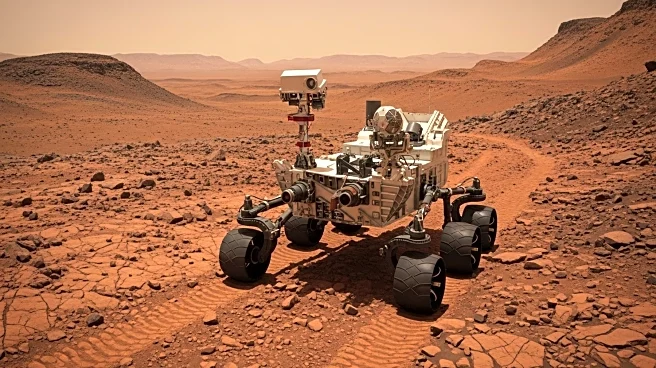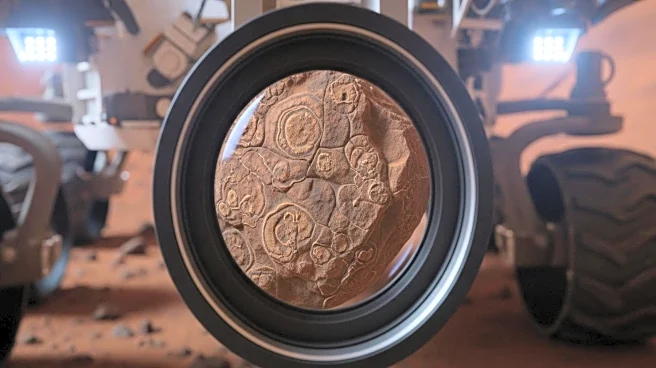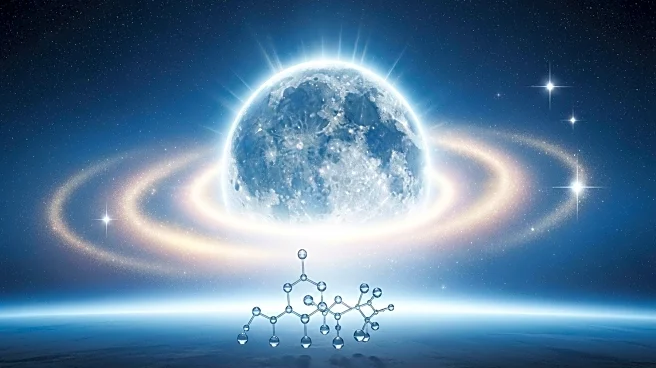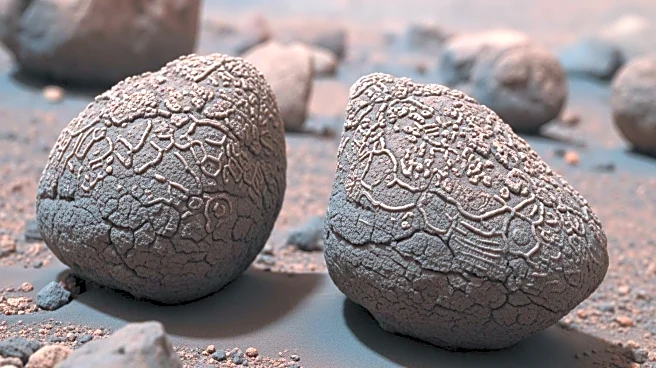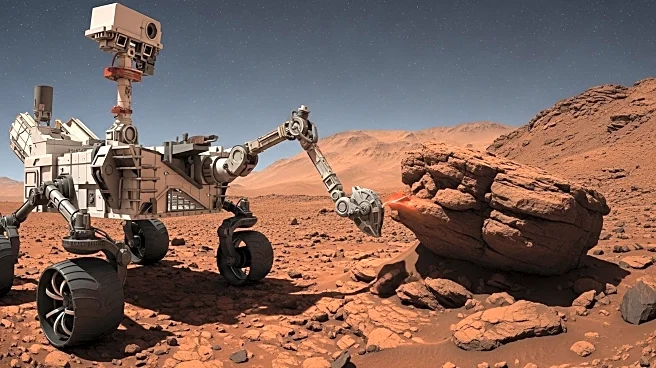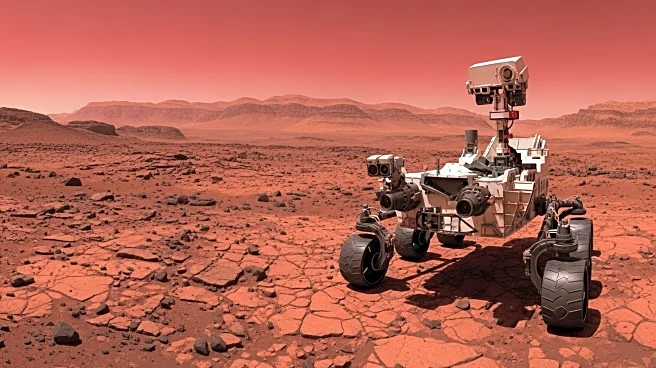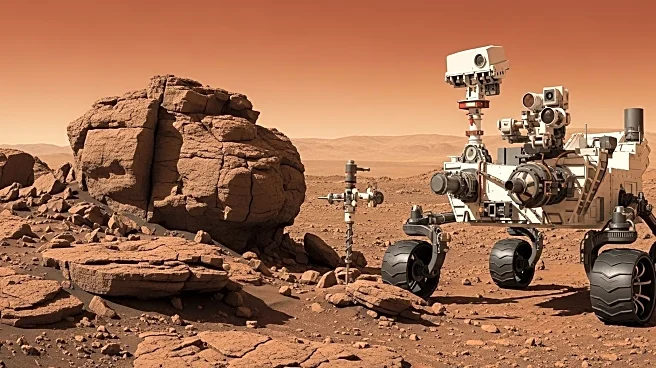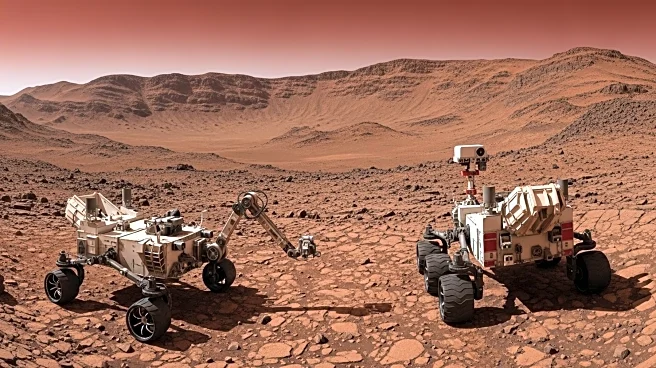What's Happening?
NASA's James Webb Space Telescope has detected signs of an atmosphere on TRAPPIST-1e, an Earth-sized exoplanet in the habitable zone. This discovery could be a historic step toward finding another Earth-like planet. Additionally, the telescope revealed unexpected structures in Saturn's atmosphere, including dark beads in the aurora and a star-shaped pattern in the stratosphere. NASA's Perseverance rover found Martian rocks with potential biosignatures, suggesting ancient microbial activity.
Why It's Important?
The detection of an atmosphere on TRAPPIST-1e could significantly advance the search for habitable planets beyond our solar system, potentially leading to discoveries of life-supporting environments. Saturn's atmospheric findings challenge existing planetary science models and could lead to new insights into atmospheric dynamics. The Martian biosignatures strengthen the case for ancient life on Mars, which could reshape our understanding of life's existence beyond Earth.
What's Next?
Further observations by the James Webb Space Telescope will aim to confirm the presence of an atmosphere on TRAPPIST-1e. Saturn's atmospheric phenomena will be studied to understand their connection to the planet's hexagon storm. Perseverance's findings will be analyzed for potential biosignatures, with samples possibly returned to Earth for detailed study.

